Important Rules To Know. The Ultimate Debate; clam gun vs clam shovel. How to Razor clam with a shovel, and how to razor clam with a clam gun.
Part 4 of 5 series on How to Dig for Pacific Razor Clams
Table of Contents
Important Rules to Know Before Going Razor Clamming
You must keep the first 15 clams you dig; no matter the size or the condition of the clam. Though the limit is subject to change per season. This rule means that if you crack a razor clam, you would still be required to take it home, and count it towards your limit. You can keep track of your clam count along the way, or dump them on the sand to be counted a few times.
Keep your razor clams to yourself. You cannot dig a razor clam and place it in another person's stash.
This next one isn't necessarily a rule, but more of a safety issue; which is that you should never dig with your back away from the ocean. It is very common to be digging and the tide comes in quite fast, which can be dangerous if you aren't expecting it. So, facing the ocean makes it less likely for accidents to occur, increasing your safety awareness while clamming.
The Ultimate Debate; Clam Gun vs Clam Shovel
The number one question we get asked when people find out we razor clam is Do you use a shovel or a gun?. My husband proceeds to answer with a shovel, of course, and it seems as though most people have a similar response of giving him a bro-nod. There's clearly an unmistakable amount of respect for razor clam diggers that use a shovel, as it's a harder technique to learn.
Though the shovel method may be the more respected method, I tend to see more razor clam diggers using a clam gun than a shovel. So, if you would like to try your hand at a clam gun, you would be among many, that's for sure.
Key note to keep in mind about a clam gun is it's much easier to use for a first-timer, or if you prefer not to completely submerge your arms in the sand.
Here is a review of clam gun and clam shovel; going over pros and cons of each.
Clam Gun (aka Clam Tube)
Pros:
- Easy to learn.
- Little to no digging with hands involved.
- Variety of options. There is no shortage of options to choose from when it comes to a clam gun. There are various sizes, some with air tubes to make digging easier, and tons of colors to choose from.
Cons:
- You may look silly pushing it in the sand. The wiggle is real y'all, but it's totally ok when everyone else does it too, right?!
- Less versatile. No other use for it besides clamming. You can use it for digging other kinds of clams, but other than that we haven't found another way to utilize it.
Clam Shovel
Pros:
- Allows you to dig in the surf.
- Easier to pound on the ground for a show. A clam show is a small indent in the sand, where a clam gives away its hiding spot. More information on clam shows in the next section.
- Easy on your back.
- Less damage to clams if done correctly.
- You get more credit.
- More versatile. A clam shovel can have more uses than just digging razor clams. Especially a quality stainless steel shovel.
Cons:
- Takes more time to learn. You can easily slice a clam in half if you don't have the technique down.
- There aren't many options to customize your clam shovel.
- Requires more digging with your hands.
- Miss more clams until you become proficient. May take you longer digging for razor clams than with a gun at first, but can work down your time at the beach with more practice.
How To Dig Razor Clams
Now that you've picked your ideal razor clamming tool, let's dig into how to razor clam. Step one of razor clamming is to identify a clam show (AKA a clam hole).
There are 5 different kinds of clam shows; keyhole, dimple, donut, swirl and clam neck. These razor clam shows are in order of what you would find from dryer to wetter sand. One thing we've come to realize over the years is, the smaller the hole, the smaller the clam. You can successfully find razor clam shows in one of two ways;
1. Spotting a clam show; which can look like various holes in the sand. One may look like a donut in the ground, and make you instantly hungry for one. Another will be a small dimple in the sand. Be mindful that sand shrimp are extremely common and will look similar to a clam show for first timers, but the difference is that sand shrimp holes typically form a small mountain instead of a dimple or donut.
2. Stomping around or hitting the sand with your clam gun or shovel in order to expose a show. Using this method, you will typically see a hole in the form of a swirl pop-up that wasn't there previously.
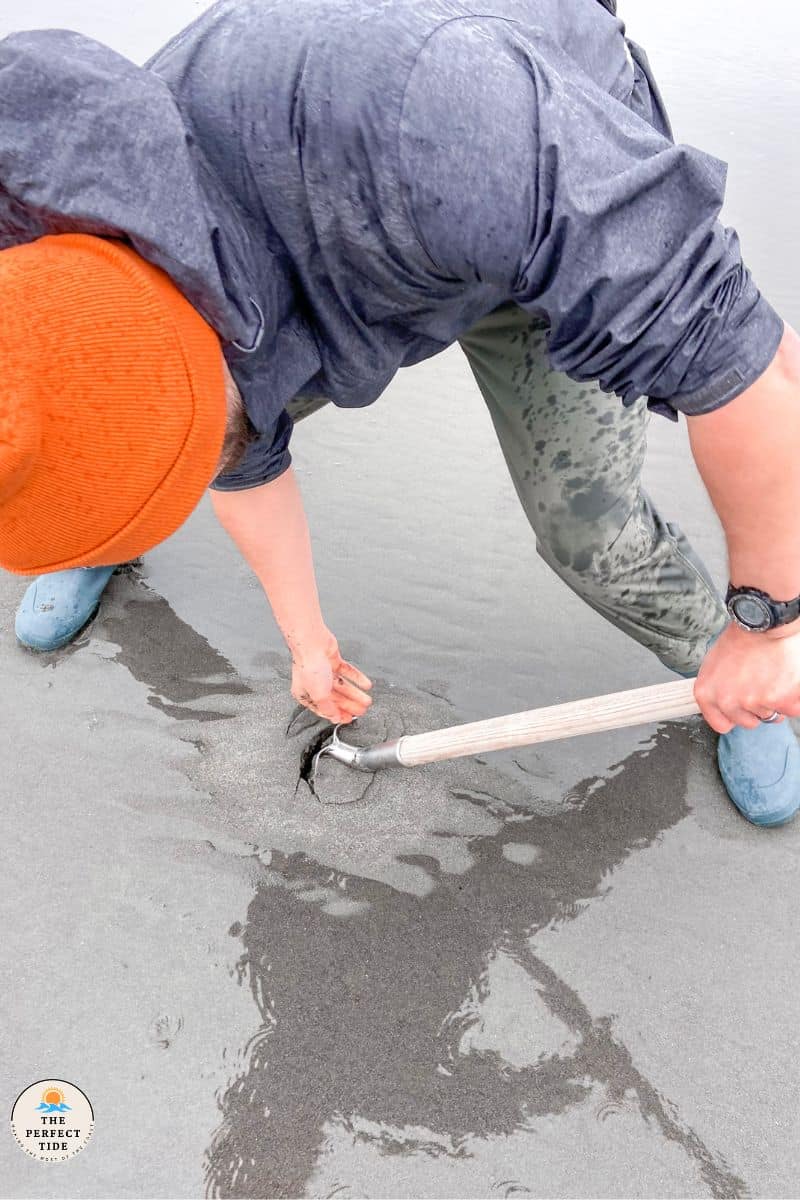
Using a Clam Shovel
This is how you can go Razor Clamming then head to work after!
Here are step by step instructions on how to dig razor clams using a clam shovel, after you have identified a clam show. While using a clam shovel, you can be much closer to the water than with a clam gun. This is mainly because when you dig using your shovel and the tide comes in, you can continue digging using your hands. Oftentimes the water makes it easier to dig using your hands, since it makes the sand softer.
1. Place the shovel blade about 6 inches on the ocean side of a show.
2. Push the shovel blade straight into the sand.
3. Carefully scoop back the sand, avoiding going back too far towards the clam. You don't want to crush the clam.
4. Repeat if necessary to remove more sand.
5. Finish digging with your hand until you find the clam.
6. Pull clam out with your hands, avoiding grabbing it by the neck.
Using a Clam Gun
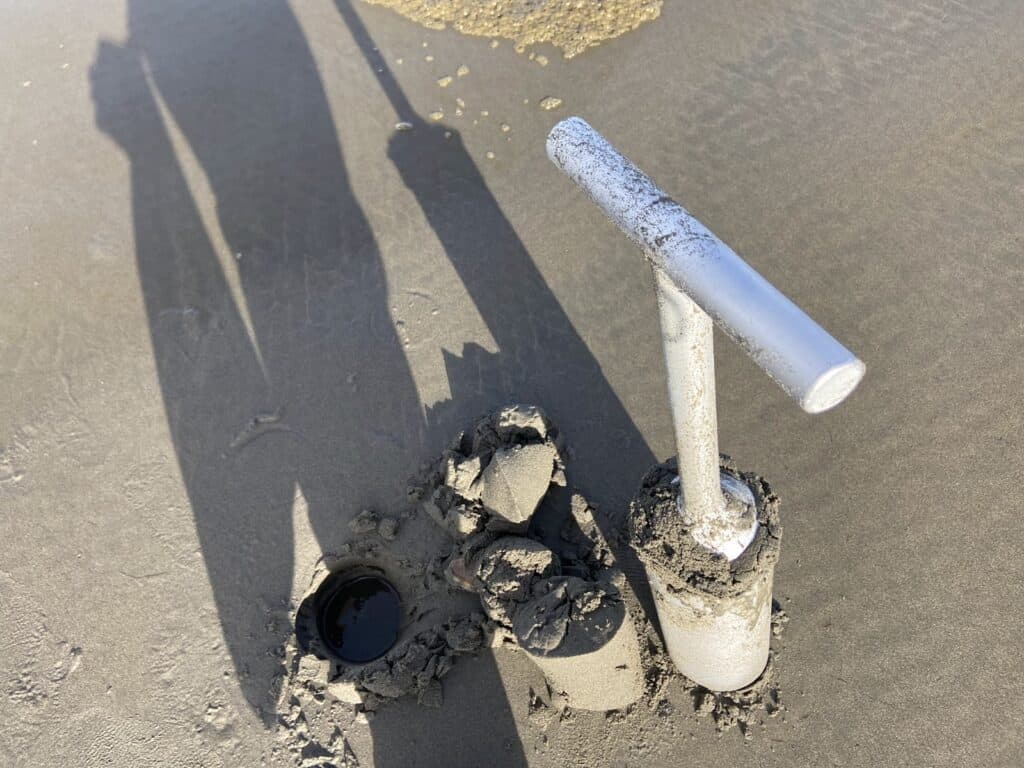
After I've located a razor clam hole show, I usually mark them by pushing my clam gun into the sand slightly, making a ring around the show. I do this mainly so I don't lose my clam shows. More often than not there are multiple clam holes next to one another. So marking them is an excellent way to become more efficient, especially when there is so much to pay attention to on the beach.
Once this step is done, here is my step-by-step of how to razor clam using a clam gun.
1. Facing the ocean, place your clam gun over the clam hole.
2. Slightly tilt the top of the clam gun towards you, and the bottom towards the ocean.
3. Push down about a foot at a time and place your finger on the plug that's underneath the handle bar, to suction the sand.
4. Pull up using leg muscle instead of your back as much as you can. Discard the sand from the tube, then gently search for the razor clam in the pile of sand.
5. If there is no razor clam yet, repeat steps as many times as necessary until you've located the razor clam.
6. Check the rules we have provided above prior to going out for your first time. It's important to know you must keep the first 15 clams you dig, no matter the size or condition.
We would love to hear how your dig went, send us a message here and let us know all about it!
Post About Your Adventure on Social Media and Tag Us!
ON IG @THEPERFECTTIDE
ON FB @PERFECTTIDE

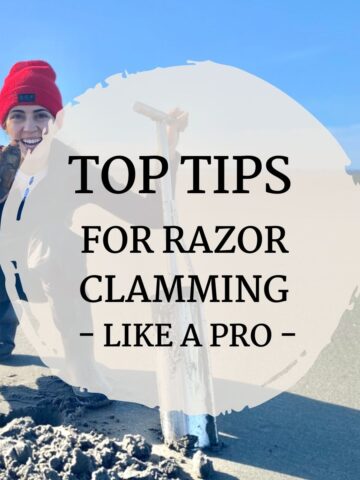
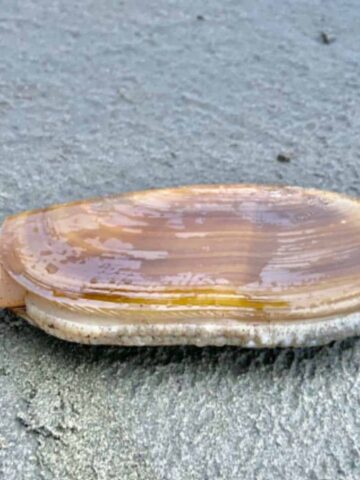

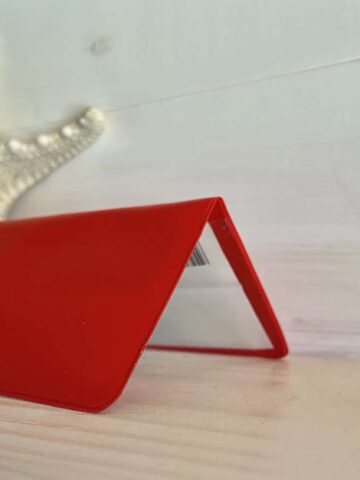








Leave a Reply